On factors distorting the plant images of the Voynich Manuscript
Contributed by Anonymous ‘Biologist, Finland’. Â Many thanks to him for his insightful commentary and guidance.
Aims and limitations
This is an introductory text for people who aim to identify plant species illustrated in the Voynich Manuscript (VM, below).
The author of the present text is a Finnish Biologist who has spent some spare time with the VM illustrations. The present text is not meant to be a final scientific truth, nor is it exhaustive for all possible distortions. It merely aims to help the non-botanist student to avoid some basic misinterpretations. It is based on information availabe in March 2014. Our understanding on the contents of VM may change rapidly in case deciphering proceeds.
Codes such as 1v or 86r refer to folio numbers of the manuscript. Good photos of each folio are available at http://brbl-dl.library.yale.edu/vufind/Record/3519597. Names in italics refer to scientific names of plants.
For simplicity, the person who painted VM is referred to, below, as â€the Artistâ€, or as â€heâ€, although it is possible that several persons may have been involved, or that some or all of them might have been women, as well.
For thorough explanations of plant structures and botanical terms, the reader should consult other sources, perhaps starting with an Internet image search using the search term â€Plant morphologyâ€. In book format, illustrated floras of the reader’s own region are recommended.
To keep focused in most probable targets, it is assumed, here, that the VM is an original document from medieval times, i.e. before Columbus transported any plants between continents. It is also taken as a working hypothesis that VM refers to plants growing in Europe, North Africa or adjacent Asia, in contrast to Australia or the Americas, for instance, not to speak of Mars or more esoteric places.
Are the identifications meaningful?
Some readers of VM have suggested the plant images to be a hoax or full imagination and thus meaningless to identify. Many mystic-looking images in VM would indeed support such a view, especially when compared with modern high quality images.

However, there are many arguments supporting the view that at least some of VM images represent real, identifiable plants
(e.g. Viola tricolor in 9v – see left). In some other cases, the Artist seems to have aimed, at least, to paint a specific plant, although with very limited capabilities to do so. It is thus a sensible task to try to understand his meaning, to the extent that this is possible, so as possibly to promote and support the linguistic work.
It is good to remember that proposing a given identification for a given plant is, in the end, a testable hypothesis: if the text can be deciphered in the future, we will probably have a lot of information with which to reject or confirm a given proposal.
Main parts of a plant
Since the discussion round the VM is multinational, it would be wise not to focus too much on exact botanical terms. Rather, we should try to understand which information sources – if any – the Artist had concretely available, during a given painting session. Here, understanding the real plants’ structures – even without any professional words – helps to understand what the Artist may possibly have meant. You can start by analyzing any plant on your own backyard.
For the interests of VM discussion, it is practical to divide a given plant into a few main parts or elements:
(a) â€Flowersâ€, including some compact inflorescences such as flowerheads in the daisy family. Depending on species, the flowers may be hermaphroditic (bisexual) or contain the reproductive organs of one sex, only.
(b) â€Fruits†(such as berries or dry capsules). A fruit is generally a mature form of the plant’s female sexual organ (gynoecium) in the middle of the flower. A mature fruit contains the â€babies†of the plant, called seeds.
c) â€Leaves†(usually broad, green parts). The leaf form often contains some additional information for identifying the plant. In the VM we need to include here the stipules which are leaf-like structures near some leafbases.
d) â€Rootsâ€, including genuine roots and any subterranean stems called rhizomes. Both parts are called roots in this discussion since it seems that the Artist could not separate them either.
e) Branching and general habitus of the plant, including the arrangement of leaves and side branches (opposite/alternate/in whorls/in basal rosettes) 나미야 잡화점의 기적 자막 다운로드.
Such a separation is useful since any analytic questions, below, can be presented separately to each part of the plant, e.g. the flower and the roots may have different types of distortion.
It also seems that the Artist has given emphasis to some of these parts, perhaps reflecting their pharmaceutical use or the fact that he has personally or recently seen only that part.
The limits of resolution
Imagine you are a lookout on a boat navigating on a wide ocean. Your task is to identify with your binoculars distant objects as soon as they rise above the horizon.
Anyone having done that understands that there are numerous factors which influence the recognition of objects: turbulent air distorts the image into twinkling mirages; sunlight and rain in the distance affect its colours, the movement and position of the object affect its contours and so on – even a salty drop in your own lense may lead you to false conclusions.
Do these problems make the lookout’s job meaningless? No, but one needs to know the misleading factors, and understand that it takes patience to filter the reliable data out of the optical noise.
I think this is exactly what we are facing in the Voynich images. We are simply dealing with the outer limits of scientific resolution, due to several disturbing and partly unknown factors between the original plant and ourselves.
In VM, the long distance between the sailor and the horizon cannot be measured in nautical miles but rather in hundreds of years: the painting were created  perhaps 600 years ago, by a person we do not know, in a place and society we do not know, and for perhaps various purposes we do not know. But we have surely spotted the vague object and can start accumulating the data.
Below, I will tell consider some mirages that could occur between yourself and the real plant on the VM Artist’s table.
Questions for analysing any plant image in the VM
 The questions are not in any strict order. They are numbered to facilitate further discussion and referral. The first ones (1-17) apply to cases in which the Artist has really had a good specimen of the plant.
1. Were there problems with species identification?
Probably there were. This is a relevant question even in modern DNA technology, even more so in ancient times with poor literature, missing optical lenses, and isolated human populations.
Even if the Artist has meant to paint a given species and got some material parts of it, the specimen he obtained may represent a different subspecies transported by a travelling collector, a related species or a fully non-related plant which has some similarity to the intended one. In those times, it was not so rare to collect many similar species in good belief and pool them together as a single pharmaceutical product.
In later stages of VM studies, this problem may result in discrepancies between text and image, as well as having some species that do not fit the geographic range of other species.
2. Was the illustrated specimen typical?
You can easily get deviating pictures of any plant if the specimen happens to be untypical, e.g. grown in a shaded place or nutrient-poor soil. Flowering shoots of a single species grown 5 metres apart may vary from e.g. one-centimetre-short pygmy plant to a 2-metres-high monster. This is the case e.g. when the former grows on a dry roadside and the latter close to a dungheap.
3. Was the plant painted in situ or as picked up?
This is unclear for many images of VM. Many naturalistic paintings mentioned above are suggestive of picked plants, some perhaps pressed dry between cloth for conservation. Both these may be taken as indirect evidence of handling some plant products.
However, not every image with a root seems to be actually picked: many illustrations with roots seem to be the Artist’s reconstructions of the whole plant, deduced from a partial specimen.
4. What was the growing stage of the model plant?
You get completely different images of a given species if you paint it in different ages or seasons of the year. E.g. 25v (above) is a credible picture but seems to represent a young or hibernating leaf rosette of a plant, thus making it difficult to identify the species. Similar problems will be encountered with very old plants.
This is a good question also in single parts of the plant. E.g. the flowers of 45v (below left) may be in the bud stage whereas 4r (below right) seems to be already fruiting.
5. In what condition was the specimen?
Some plants were possibly transported from their growing sites to the painting session. In medieval times, cars and cooled styrofoam boxes were not available to keep the specimen fresh 디아블로2 무료 다운로드. Some plants may have been brought by hiking monks or pharmacy suppliers dwelling weeks or months away in the forested mountains, Â and brought back a dusty leather bag or a basket filled by a messy clump of withered herbs and roots.
Preparing a given plant for painting would therefore not easily result in a very natural image, and may lead to misunderstandings.
6. How much has nature changed?
This question will be relevant in comparisons of the distribution ranges of the different plants, in order to find the location in which the VM was made or which languages were spoken in the area.
600 years ago, a given plant may have been common and widespread in Southern Europe, for instance, but overcollection, human settlements, fields, pastures and deforestation may have shrunk its current natural area into a single hectare in a single river valley. Thus, the VM may have been painted in Spain, for instance, even if some of its plants do not grow there any more.
Also the opposite may be true. Some plants have expanded their distribution during the last hundreds of years, especially in open, disturbed fields with human influence. Some have been introduced from the Far East, escaped from cultivation and so on. Thus, we may wrongly search for the VM candidate plants among the common species of today, although these might not have grown in the area at the time of painting.
7. Was the specimen cultured or growing wild?
This question becomes more relevant in a later stage, if the plants are correlated with their current or original distribution ranges. Important pharmacy and food plants were cultivated in gardens far beyond their original distributions but that cultivation may have ceased later on. Thus, we may find in the VM some cultivated plants which do not fit with the distributions of the other plants illustrated. The same result may naturally follow if the plant part has been transported, e.g. as a pharmacy product.
8. Has there been some evolution between?
In terms of evolution, 600 years between the VM Artist and ourselves is a very short moment, practically nothing.
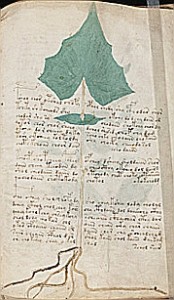
Most likely we would not see any differences in wild plants, even if they were carefully painted.
However, during the possible cultivation of some of the drug or food plants illustrated, there may have been strong human selection towards some desired features. The human breeding and selection of modern lettuce and cabbages, for instance, has only taken about a couple of thousands of years.
We could keep this in mind e.g. when looking at the folio 8r (right). The leaf form reminds us of some wild relatives of lettuce (Lactuca). It could possibly represent a lettuce variety cultured at those times.
9. Modifications due to layout or clarity
It is natural even today that an image is fitted into a given space. Regarding plants, this is actually a very tricky question. Even in modern books with high quality photographs or drawings, the illustrator needs to make compromises between nature and clarity. If you illustrate a whole tree or a tuft of grass, you cannot discern the structure of its flowers, and vice versa. An insert picture for details is often used, but seemingly this did not fit into the graphic ideals of the VM Artist.
The Artist of the VM therefore faced the universal layout problem with very limited tools and traditions. One of the solutions is â€grafting-within-species†discussed below: If you needed to squeeze an apple tree onto a page you might e.g. draw a small plant with two branches, one of which has a big leaf and one which has a big fruit. Then you could just graft these branches to a single root. If this method applies to 14v (below), it may represent a fragment of a nettle (Urtica). In many unsolved images, we do not know, as yet, the solutions chosen by the Artist.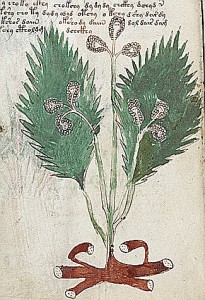
10. Have parts been â€grafted†from distant parts or separate growth stages of the same species?
This option refers to a kind of â€chimaera-within-speciesâ€: e.g. if a species flowers in spring and produces leaves only in the autumn, painting leaves and flowers as if branching from the same plant would be somewhat unnatural. In a similar way, if the flowers are always produced in the top of the plant but the Artist paints them as diverging from the root, the species may be correctly identified but the result looks grafted Download 180 degreemp3.
This distortion can be suspected in e.g. 7r, 8r and 34v (below). In fact, many VM plants look like being cut just above the roots, and some grafting between the root and stem may be more a rule than an exception in VM. This style may also be an indirect evidence for the possibility that the Artist was working with pharmacy products.
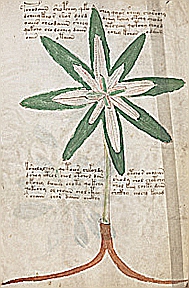 Â Â Â
       Â
    
7r, 8r and 34v
11. How much did the Artist handle the plant?
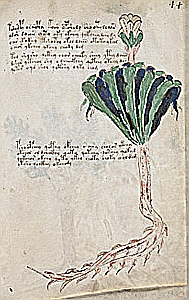 The problem of the angle of observation is related with the fact that many images of VM seem to be based on very limited practical study of the plants. It seems that the Artist has painted many features as a passively standing observer who copies flat areas of different colours rather than showing their three-dimensional structure (see e.g. 44r left). It seems that the artist has seldom taken them in his hands, turned them round, bent leaves or flowers open and so on. If he had done this, we would see a better botanical quality in many of the figures.
The problem of the angle of observation is related with the fact that many images of VM seem to be based on very limited practical study of the plants. It seems that the Artist has painted many features as a passively standing observer who copies flat areas of different colours rather than showing their three-dimensional structure (see e.g. 44r left). It seems that the artist has seldom taken them in his hands, turned them round, bent leaves or flowers open and so on. If he had done this, we would see a better botanical quality in many of the figures.
It may be strange to suggest that the Artist dealt with pharmacy products as his business, but yet did not study the plants very well for identification. This may be due to some specific role he had in the working team. It is also not rare to be skilled in one side of a business but overlook some other aspects.
12. How well could the Artist interpret the structure of the given plant?
This question is related to the aforementioned lack of empirical touch. These two distortions increase each other. Of course the literature during the VM times was extremely scanty or perhaps absent from the Artist’s study. Probably he did not know what was important for separating two plant genera from each other. It took still perhaps 300 years until Carl Linné studied plants systematically. The Artist may thus not be blamed, but the fact remains that in many cases he was not able to understand what he saw. So he just copied a superficial image of what he was interested in looking at, leading to many deficiencies of detail.
 The â€best†images with identifiable plants, such as 9v (right) , let us estimate rather well the maximal analytical power of other images, too. These pictures tell us that the Artist was e.g. not capable of analyzing the arrangement of leaves or of differentiating between stipules and proper leaves. Nor did he pay attention to the calyx or spurs of flowers.
The missing or weak understanding of plant structure is also seen in images with modest flowers or other structures smaller than e.g. 5 mm. Thus, he often illustrates some small structures as fuzzy dots (e.g. the flowers of 21r below).
13. From which directions did the artist look at the plant?
While some plants are rather similar from different looking angles, others are certainly not. Especially some irregular flowers or inflorescences such as orchids may look totally different when seen from the front, side or back of the flower. For example, the odd flower or fruit of 42v (below)may get an explanation once we understand how the Artist has looked at the plant. It is also possible that two perspectives are combined in a same image (people often draw a drinking glass so that the bottom is seen from the side but the opening is seen as an oval). In the latter case, 42v (below) might represent e.g. a Narcissus.
14. Technical limitations of the painting session
It is hard to point out images in which this factor may apply. However, it is good to remember that the Artist probably had a working environment with several limitations. Did he work in a small, uncomfortable cellar in dim candlelight? Was he debilitated in one form or another? How did he sit, stand or move? How was the model plant positioned in relation to his eyes, to the light source and to the parchment? Was the plant part in his hands, lying on a table or fastened on a vertical support? How were large plants handled?
It is possible that he saw the real-looking small herbs such as 25r (Mercurialis?) (below left) in a right angle towards a sheet on which the plant laid pressed. On the other hand, the shadowed undersides of 13r leaves (Petasites illustration cs2 for free?) (below right) look as if the plant could have been folded on a surface. As I said, he seems not to have touched the plants very much so as to analyze them.
25r and 13r
15. Limitations of the painting materials
Limitations in materials would not necessarily be significant if the illustrations were otherwise clear. However, considering the many other distortions, possible limitations of the Artist’s materials may add some confusion. The main problem seems to be the selection of pigments. Did he have access to all colours he needed?
Considering the variety of existing pharmacy plants (or any plants) and the variation of VM images, it seems that blue colours of flowers may be over-represented in the manuscript, whereas the manuscript contains relatively few yellow flowers, for instance. This leads to the suspicion that the Artist may have replaced some natural colours with some other  â€nearest matching†colours he had available. Do some blue flowers refer to purple or red ones? Or could some red-orange or white flowers represent yellow ones?
16. Changes during later storage of the manuscript?
I have no positive evidence of possible distortion during later storage, but naturally this is an option. Some pigments may e.g. fade during tlong storage.
17. How much have parts of the image been “zoomed�
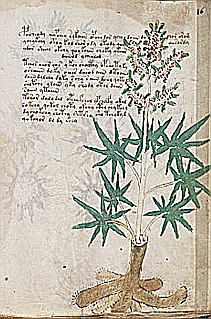 This is a potent and relevant source of misinterpretations. It means that it is often unclear in the VM which magnification the artist has used for the whole image or for a given plant part. A good example is 16r (left): If it is meant to illustrate a plant about 1m wide and 1.5 m tall, it could be conceived as Cannabis with large palmate leaves, for instance.
This is a potent and relevant source of misinterpretations. It means that it is often unclear in the VM which magnification the artist has used for the whole image or for a given plant part. A good example is 16r (left): If it is meant to illustrate a plant about 1m wide and 1.5 m tall, it could be conceived as Cannabis with large palmate leaves, for instance.
However, let us assume that the Artist of 16r (left) has made a closeup picture and the width of the image area only represents 5 cm in nature. Then the assumed â€Cannabis leaves†could actually represent small shoots of a Juniperus. In the latter case, grafting of the root directly with the small tip of a twig adds confusion.
It is also possible that different parts of a given image have differing magnifications.
E.g. the plant of 31v (right) is very difficult to explain as a naturalistic description, since the top seems to be an umbel with numerous small flowers, but the fruits on the left suggest big, single flowers which have matured into fruits. One possibility for 31v (right)  is a chimaera of two species. But we may also ask if the Artist has possibly â€zoomed†more in the fruits, drawing these in a larger scale. Then, e.g. Sambucus might become a candidate, although the calyx of fruit does not fit.
The next questions (18-24) apply to cases in which the quality is lowered due to more serious limitations.
18. Have some parts been exaggerated or neglected based on their practical uses?
It is an inherent feature of nearly any painting that some features are emphasized, at the expense of others. This is even more relevant in a practice-oriented book which the VM probably is.
If the painter wishes to point out a valuable root which can be used as medicine, he may paint it larger, colour it stronger and so on (e.g. 45v below).
Another reason to exaggerate something may be the part’s importance for identifying the plant. E.g. in 23v (below) the artist seems to make the point that the leaves are rough or hairy.
As an example of neglect, the root of 21r (below) does not seem to interest the Artist very much.
19. Have some parts been distorted due to aimed clarity in other parts?
The Artist seems to have had technical problems in illustrating some characters he wants to communicate 비동기 엑셀 다운로드. From many features of the VM we can assume that he was neither a very skilled artist nor a patient plant observer.
It seems that he has attempted to illustrate a given characteristic feature (either from a model plant or from his memory), but  painting this point clearly has then led to a distorted form of the adjoining structures. You can self study this phenomenon by painting your friend’s face, starting from some striking feature of him or her and being not allowed to erase your lines. Does the result look like his or her photo?
This problem is likely to occur in some complex leaf forms such as 3v (below left) and 9r (below right), but to a smaller extent affects many images. On the other hand, finding such distortions may lead to finding an important characteristic of the plant in question.
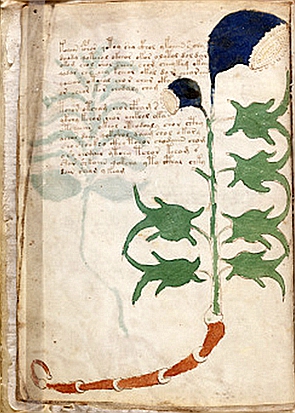 Â Â Â Â Â
     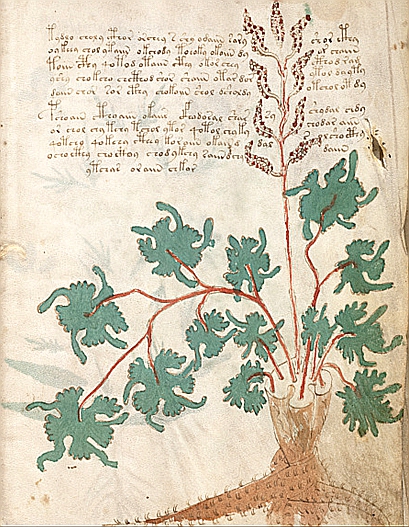
3v and 9r
20. What parts of the plant did the Artist actually see?
We need to keep this question honestly in mind, but we do not know, as yet, which images are based on deficient data.
It may be strange to us that something is painted in a factual book (if VM was one) without observation, but this was not so strange over half a millennium ago. Writings of famous authorities or religious readers, myths of the local population or just travellers’ rumours were mixed because they were the only sources available.
If e.g. a cartographer was told that unicorns occur in a given land, he just painted them in the map. The places of distant rivers and landmasses were based on similar data. Actually, similar human factors apply in today’s religious or political â€truthsâ€.
Several images, such as 9v, 13r, 21r and 25r (below), are so drawn in such a lifelike way that the Artist probably had them (or excellent original figures of them) in front of his eyes. But in VM there is a long, gliding slope towards pictures with increasing lack of clarity, up to probable mixtures of reality, inaccurate observation and pure imagination.
9v, 13r, 21r (above)
25r (below)
21. Were second-hand sources used?
These could include older paintings the Artist has seen, instead of a concrete plant. Some of such copied images may be traceable from other ancient sources, but in most cases this will be very difficult to confirm.
He may also have based some characters on descriptive words he has heard or read from others. E.g. if 19r (below) would represent Delphinium consolida, the form of flower could be understood if he has only learned that â€it has big, blue flowers†and completed the form of the flower from his imagination.
22. Is there some artistic repetition (i.e. copy-pasting) of a theme?
This is an important distortion and limitation of several VM images. It means that even if a given image shows e.g. ten leaves illustrated, the Artist has actually not studied the variation of ten leaves of a real plant on his desk. Instead, he has had a (more or less well-based) idea how one leaf looks like, paints one leaf and then just copies the model to complete the rest of the plant. This has probably occurred in e.g. 3v, 9r, (below) Â 24v and 34v, but affects many other images, too.
3v and 9r (above)
Repetition of a single model is a powerful and deceptive distortion since it gives you an impression of a lush, carefully drawn plant but the hard empirical basis is extremely small, since even the model leaf image may suffer from deficient data and of many other problems. But you may yourself realise how soon you would get fed up when trying to draw individual leaves of a whole tree, for instance.
Considering the repetition problem, it is a relief to see some VM images that seem to represent an entire plant seen and studied. Examples of these include the above mentioned 9v, 13r, 21r and 25r. It can even be speculated that the Artist of some of the more trustworthy images could be a different person than the Artist of some of the more imagined plants.
23. Limitations of skill and style of the Artist
The VM images tell us many things about the personal style of the Artist. To analyze this fully we would need more plant species confirmed by the text, however.
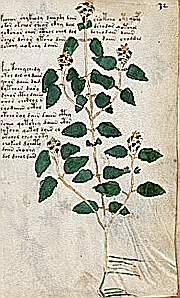 Here, we should remember the option that there could have been two or more artists, or the same artist was in different â€moods†when painting different images. Folio 32r, (left) for instance, would seem to be a realistic illustration of a pressed Prunella or another member of Lamiaceae. Note the stems and modestly drawn leaves being behind each other.
Here, we should remember the option that there could have been two or more artists, or the same artist was in different â€moods†when painting different images. Folio 32r, (left) for instance, would seem to be a realistic illustration of a pressed Prunella or another member of Lamiaceae. Note the stems and modestly drawn leaves being behind each other.
If we compare this with 66v (right) – whatever it is – we see a more decorative or ornamental 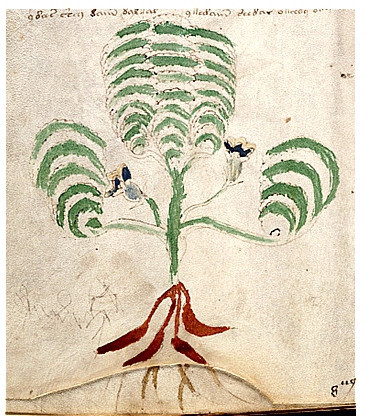 illustration 남영동 1985 다운로드. In the latter image, the Artist has given space to his sense of beauty or graphical regularity, rather than to the structures of nature.
illustration 남영동 1985 다운로드. In the latter image, the Artist has given space to his sense of beauty or graphical regularity, rather than to the structures of nature.
As a sum of several VM images, we can describe the VM Artist as “impatientâ€. It seems that he had a limited time available to study those plants he had, and to complete the book. We cannot say how much he was pushed by external factors, how much by pains caused by his diseases or by his impatient personality. For any reason, he was not able to peacefully contemplate the structures of the plants he painted.
It seems that when he started to paint a given plant, he tried to gather some information about it. If he had a whole specimen, fine. But if he had only a root, some dried fruits in a drug jar or second-hand sources or stories from the rest, he just decided he had enough – and â€glued together†the whole image. Having in many VM images the roots cut above the earth (e.g. 7r (below) 9r, 16r) is also a signal of reconstructions rather than entire plants.
24. Role of the Artist’s memories
Some features of VM images are easier to understand if they represent memories of the Artist. In other words, he could have seen the plant in question, but this happened perhaps weeks, years or decades before the painting.
This is a relevant option already when considering the limited chances of travelling and making pictures in medieval times. Some important drug plants may grow in distant mountaintops where the Artist has himself climbed only when younger. Perhaps he later dealt with specimens sold by other collectors.
Perhaps the Artist was permanently disabled for some reason. Maybe he was old or suffered from a disease or from side effects of testing his own mixtures. Perhaps he was not able to walk further than to the courtyard where he picked the violet, the Prunella and some others. But he was able to serve his society as a drug mixer, as a painter or as an esteemed philosopher and astrologist, as the latter part of VM may indicate.
 Odd leaf forms such as 9r (left)Â or 24v, or several flowers, may be cases in which the Artist tries to reconstruct a form he has seen a long time ago, paints first one leaf and then just copies the very deficient result to the other leaves. Perhaps he was able to make some sketches but could not erase anything in the final picture.
Odd leaf forms such as 9r (left)Â or 24v, or several flowers, may be cases in which the Artist tries to reconstruct a form he has seen a long time ago, paints first one leaf and then just copies the very deficient result to the other leaves. Perhaps he was able to make some sketches but could not erase anything in the final picture.
If the Artist only remembers a short, perhaps impressive “meeting†with the plant, this may also bring the element of chance in the picture. How was the plant illuminated, how young was it, and was there any random happening which distorted his understanding of the structure?
Â
If, for instance, the folio 50v (right) represents Soldanella, as the lower parts would
suggest, what is the odd circular â€fusion†in the top of the inflorescence? Does it reflect something real in the Artist’s memory, or is it only a way to make the plant more impressive or mystical?
The last questions (24-30) refer to factors which are most distant to the actual structures of the plant and may lead to gross distortions in identification.
25. Societal factors
This is an interesting aspect, although we do not know very much how it applies in the VM. The Artist may have been given instructions or preconditions by his leaders or by persons who paid for his work.
In addition to defining tasks and timetables, such paymasters may want, for example, that the plants look â€beautiful†or â€impressiveâ€. This may also be an aim of the Artist himself, if he works independently and plans to use the book for teaching or for selling products to customers in his pharmacy shop.
Using a private language, perhaps a rare dialect spoken by old relatives, might fit in a motivation to keep some commercial pharmacy secrets in the family.
In order to understand such factors, we also need to understand better the division of labour in production of the VM. Was the Artist the same person as the text author? Was he the same person who had the wisdom about plants and stars, or did he just paint or write as a hired craftsman? Who else belonged in the social group, affecting the result?
Were there commentators who said about a draft: “No, those flowers should be red!â€, and how were their comments taken? Considering the general limitations of mediaeval times, the VM as a whole was obviously respected, however, by those who saw it.
26. Was the image meant for a full species description?
If not, then you cannot expect it to be naturalistic. E.g. Folio 1v in the beginning of the VM might show a Solanum, but perhaps it only illustrates a plant in general. The decorated plant parts of 86r may describe pollination in general, not any single species.
Also the small pictures after 88v may be just condensed symbols or reminders of a larger plant (cf 영어 애니메이션 다운로드. icons on a computer screen). My current hypothesis is that these pages represent pictorial recipes of drug mixtures, and the cylindrical objects on the left are symbols of decorated drug jars. This part of the VM is a promising source of plant names, since many names attached to the plant parts may be identical with the larger species desriptions.
27. Are there modifications based on the “story†of the image?
Many pharmacy plants are connected with stories about their history or medicinal effects. Such stories may often be involved in the names of the plants, as well. The Artist may have emphasized parts which fit in these traditions.
In some images, the Artist has added other creatures which may be telling these tales. Is the plant 49r effective against worm diseases or snakebites? Or does it often have insect larvae eating its rhizomes? And what is the creature in 25v? Is it a frog, a lizard, a devil or a dragon? Do some of the plant’s ancient names give a clue? Has the plant been used to treat animal bites?
The story may apply to plant parts, as well. In 4v there are star-like forms which may more or less fit in real plant structures (star-like styles and capsules of Polemonium?) but may be emphasized due to the pant’s supposed mystic connection with stars. [See discussion of this plant, and the stars,  here]
28. Are there modifications due to decoration or cultural norms?
This distortion overlaps with the social factors and with the artist’s personal style. I am referring to cases in which certain cultural norms or concepts of beauty affect the whole era or society of the Artist. This is seen e.g. in figures of humans (or human-like spirits) in folio 70r onwards. This may affect the plant images, as well.
Features suggestive of decoration include symmetric or graphic forms (e.g. 49v, 54v, 56v, 66v) or too regular leaves (e.g. 39v, 52v, 53v), but this distortion should be suspected to play some role in most of the images. We can also study such cultural norms by comparing the old art styles of the Japanese, Australian aboriginals and South American Indians.
This question may apply to some dense leaf-like structures that look like scales of fish. It is still unclear which meanings these decorative leaves may have. The natural basic supposition is that they illustrate compound leaves or dense arrangements of leaves, but some symbolism is certainly involved.
As far as cultural norms apply, it may happen that a given distortion was not seen by the contemporary audience at all. Even if they would see the plant and the image side by side, they would conceive it as a perfect description. But it may be a problem to us, in a different culture, some 600 years later.
29. Should a “chimaera image†be suspected?
With this very misleading distortion I refer to images in which the Artist has â€cross-bred†or â€grafted†parts of two or more real plant species in the same reconstructed image, as if these were parts of the same plant. The chance of chimaeras naturally lead to a large number of candidate plants since it is often not clear which part is â€real†and which has been borrowed.
If the flower has been missing from the specimen, for instance, but the Artist has had the task to paint the whole plant, he may have assumed from the collectors’ stories that the flower is rather similar to another plant he has, and drawn the flower according to the latter species.
There are several pictures in VM which may be chimaeras, concerning some plant parts at least. E.g. the fruits and flowers of 31v (left) are rather difficult to explain otherwise. A relevant option is also that the missing part is “grafted†from the Artist’s own vague memory of the real part. There is thus a gradual overlap from chimaeras to imaginary filling-in, discussed further below.
30. Has something been filled in from imagination?
With this perhaps strongest misleading factor I refer to illustrated features which have nothing to do with the actual plant mentioned in the VM text. The Artist has – more or less knowingly – just invented them. This factor overlaps with the chapters about â€chimaera images†and about the memories of the Artist.
It is very likely that some flowers of VM, for instance, have been just invented. This may have happened because the Artist had only a pharmacy product, e.g 소녀시대 힘내 다운로드. a root and a memory of the leaf, as a basis of his illustration. He got most of the plant painted but had no idea how the flower looks like. Due to the task setting, his boss’s demand or his own marketing needs, he would like to have a flower, however.
Then, stressed by the limits of the schedule and by his own impatience, he just painted an imaginary flower in the top of the plant. This is not so rare 600 years later, in today’s university exams or marketing ads.
There are quite a number of illustrations in the VM which have a big, irregular number of scales in the basal part of their flowers, or a big number of petal-like flaps in flower margins (e.g. 18r, 20v, 33v, 34v). These and some other structures are suggestive of only a few plant families, especially Asteraceae (the Daisy family). It would be odd if the entire wide selection of pharmacy plants would include such a high percentage of these families, and it is hard to find enough species in these families which fit the leaf characteristics of all the illustrations. So, some flower images may be just the Artist’s decorative way to say: “surely it must have a flower, tooâ€.
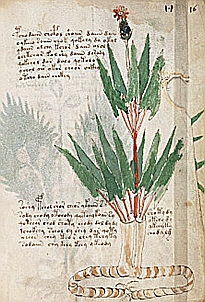 It may be even more difficult to recognize imaginary modifications if they are used in smaller details of plants. Let us take the folio 14r (left) as an example. Its red flower would fit quite nicely in some members of the large Campion family such as Silene dioica. But let us look at the leaves. They are arrow-like, they are arranged in a big whorl in the stem and other leaves come directly from the soil. In relatives of Silene, leaves are usually lancet-like (no flaps on the bases), and leaves occur pairwise on the stems, opposite each other. Has the Artist invented wrong leaves for a Silene or a wrong flower for a totally different plant with arrow-like, whorled leaves?
It may be even more difficult to recognize imaginary modifications if they are used in smaller details of plants. Let us take the folio 14r (left) as an example. Its red flower would fit quite nicely in some members of the large Campion family such as Silene dioica. But let us look at the leaves. They are arrow-like, they are arranged in a big whorl in the stem and other leaves come directly from the soil. In relatives of Silene, leaves are usually lancet-like (no flaps on the bases), and leaves occur pairwise on the stems, opposite each other. Has the Artist invented wrong leaves for a Silene or a wrong flower for a totally different plant with arrow-like, whorled leaves?
Naturally, we may still find a less widespread plant which has a good fit for all the 14r (left) characteristics. However, many other images have similar problems and it is realistic to assume that something is invented. Increasing understanding of the VM text and its geographic range will most likely clarify this issue.
We must also consider the chance that some illustrations of the VM are entirely invented. Let us assume that the Artist has heard of a new, exotic pharmacy plant which everyone was talking aboout. It is said to cure all illnesses and the customers want to buy it for any price. The Net is teeming with ads like that even today.
Perhaps the Artist has received some powder transported from India but he has no idea how the original plant looks like. There is a strong temptation to make an â€educated guessâ€, i.e. draw the plant from scratch, since no one in the area can claim it to be wrong. Perhaps even the Artist himself believes in the splendid result.
If this error applied to all images of VM, the whole manuscript would be a hoax or imagination. Based on many points mentioned above, however, my current hypothesis is that a significant part (say, 70-95%) of the VM illustrations are aiming at real, specific plants with some true structures as the basis of the images.
I believe the issie of imaginary contents is a quantitative problem which can be slowly minimized by recognition of various types of distortion, by finding best possible species matches and, ultimately, by solving the text.
What remains?
Having read a tiresome list of sources of error in the VM pictures, you may ask whether any firm ground remains for a serious study on the plants behind the images.
In my opinion, this is actually where a serious study can begin. Now we know what kinds of information we may look for, and where to be careful.
Sensible work to do includes the following:
- 1.      You can widen the list of possible candidate plants
You can participate this simply by proposing names of plants you think resemble a given illustration. A scientific name is preferred, since colloquial names vary from region to region. You may suggest a name of a genus (e.g. Rosa) or a species in that genus (e.g. Rosa canina).
Traditional medicinal uses or typical growing terrains of the plant in your area are good additions, as well. However, information on these may be found afterwards from public sources.
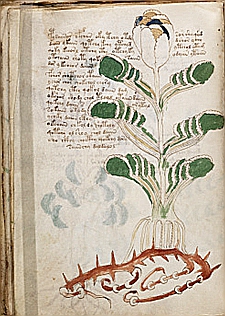
Sending only a scientific name connected with the folio number is fully sufficient, e.g. â€Folio 22v: Rosa?â€. The genus Rosa (roses) is a good candidate for 22v, by the way, if the horizontal part does represent a spiny stem rather than a branching root 윈도우7 이미지 다운로드.
Especially if you submit some name which seems an odd candidate or is a rare plant, you may indicate the part of the plant which you think looks like the given image. You may find that an endemic plant of your region looks very much like the picture when it is young or its berries are just starting to mature. This is something which may be difficult to find by means of Internet searches or in general plant books. In such cases you might complete your suggestion by a couple of words like “The top part of Folio 22v (left) looks like our local Rosa gallica, flowers just opening and leaves still folded. Roots are not similar, however.â€
Enclosing a photo or a photo link of your local candidate plant may help to understand your point, since other people reading the site may not come from the same region, and good pictures may be missing in the Internet. Any plant can be seen from so many different angles, however, that it is wise not to stick in any single assumption.
We can expect that there will be, say, five good candidates and twenty less promising candidates for any folio of the VM. At the present stage of the work, we just need to accumulate neutrally all possible candidates, even â€silly-looking†ideas, if they have something in common with the illustration. A suggestion of an amateur may be as good as that of a professional botanist. The VM Artist was in some respects an amateur, as well, and only when the text is solved will we know the truth.
In the current stage of the study, there are some botanical hints that readers who trek in or near the mountaineous areas of Southern Europe might have the best chances to know, in terms of plants matching with the VM. Good fits with endemic genera and species (i.e. plants growing in a small area, only) may help to limit the area in which the VM could have been written. But nothing is confirmed, as yet.
- 2.      You can add knowledge on names and other words
If you know your local dialect names of the plant, that may be very useful for the linguistic work.
I am just an amateur in languages myself, but having spent some time with the images I would like to propose the following:
Especially if you live in Southern Europe or adjacent Asia, your old relatives or local teachers or researchers of literature may know old books, stories, healing traditions, verses, songs, jokes or proverbs connected with the candidate plant you are suggesting. These may still contain traces of the old names or stories which were known to the VM Artist, as well. Do you know any local plant names fitting with 49r, for instance, which refers to worms or snakes?
If you are visually talented in looking at words, you may spot words that look similar in different parts of the book.
I think, personally, that it would be worth while to compare the root names in the â€recipe section†in the end (folio 88v onwards) and in the wider plant articles in the beginning of VM. The “recipes†may contain ingredients which are not described in the larger articles, however, and vice versa.
Another chance is to search for some basic terms for botanical entities such as the word â€root†in entries where roots seem to be the part used, or â€water†in the chapters of bathing ladies or female spirits (75r onwards).
A third promising option is to find some repeated patterns or familiar terms in the circular images on pages starting from folio 67r. Are there names of months, days of the week, the Sun or of the first numerals? Or perhaps you could spot words for the four “humors†or the corresponding basic elements used in old healing philosophies (search the Internet for the word â€Humorismâ€).
The â€Voynich Testâ€
If you still think that the lousy quality of the VM images can only be explained by a hoax or fantasy, I kindly suggest you to make an experiment which I call, here, the â€Voynich Testâ€:
Take, say, 20 sheets of paper and a set of water colours. Go into a closed room without looking at any model plants, books, computers or other information sources. Then just paint from your memory 20 species of plants which you think are most common in your neighbourhood. One species per sheet, no sketches allowed since parchment was expensive.
This should be easy since you are a clever and highly educated, modern person. The VM Artist could never have imagined all the information you have had available all your life. And you have walked by or trampled these plants thousands of times, haven’t you?
If you want to make it easier, ask someone to bring you a detached leaf or a root of, say, 10 unidentified plants (you recognize them from parts, don’t you?). But if you wish to makeit more medieval, do it when you are have a headache or sore throat, fetch the water with a clay vase from 500 metres distance, keep your room chilly and drippingly moist, and use a candle as your only source of light.
To fulfill the test, attempt to illustrate in the same plant the flowers, leaves, fruits and the roots of each species. Join the parts correctly to each other, according to the remembered characters of each plant gp pro ex 4.0. You may also write names and verbal descriptions of the plants, beside each painting.
After finishing the task, staple your manuscript together and get the real plants or good closeup photos of them, for comparison (you find them quickly in the nature, don’t you?). I guess both you and your friends will have a lot of fun in finding many of the discussed features in your own “Voynich Manuscriptâ€.
Happy searching!
Biologist, Finland
- Posted in: Voynich ♦ Voynich plants
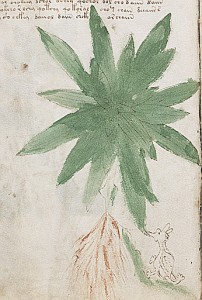
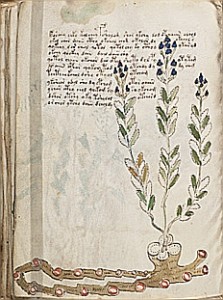 Â Â Â Â Â Â
      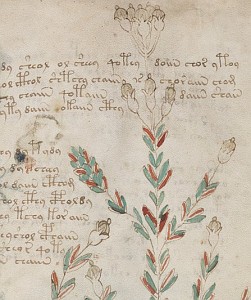
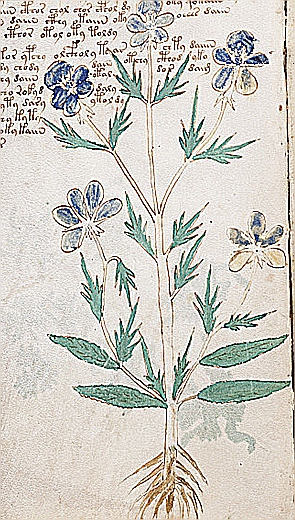

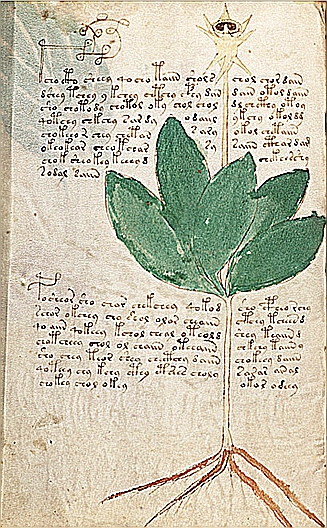
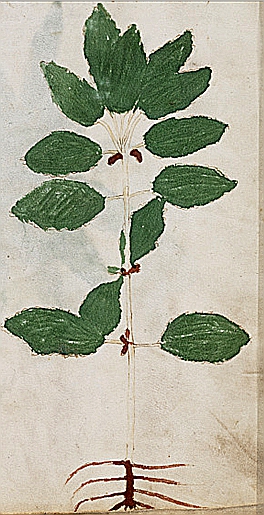
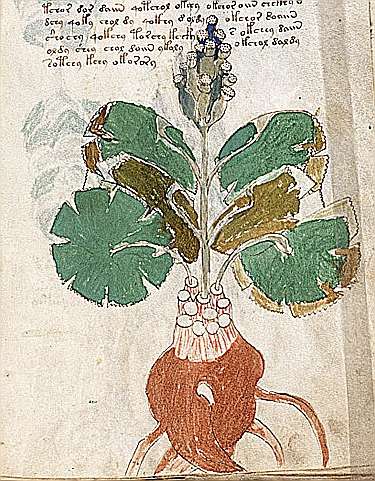
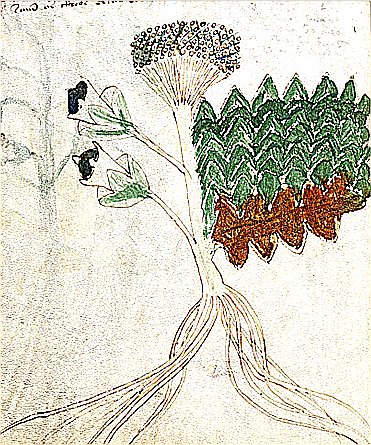
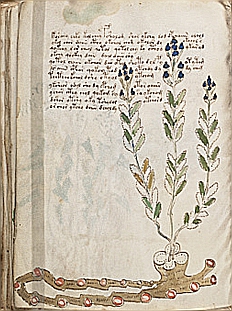
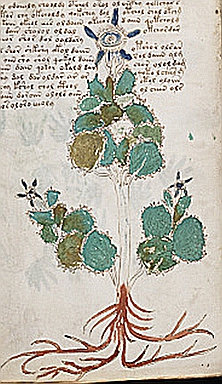
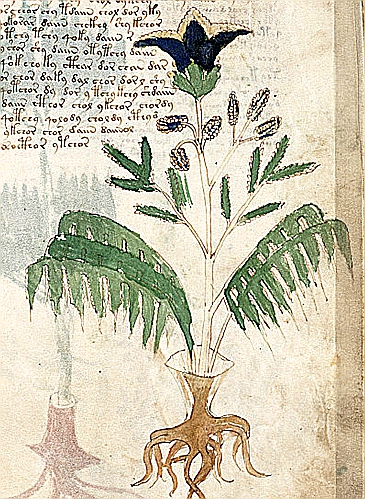
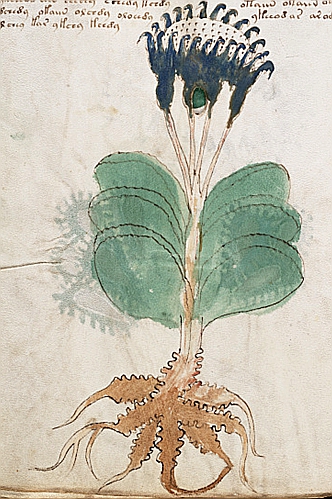
62 Comments
Trackbacks